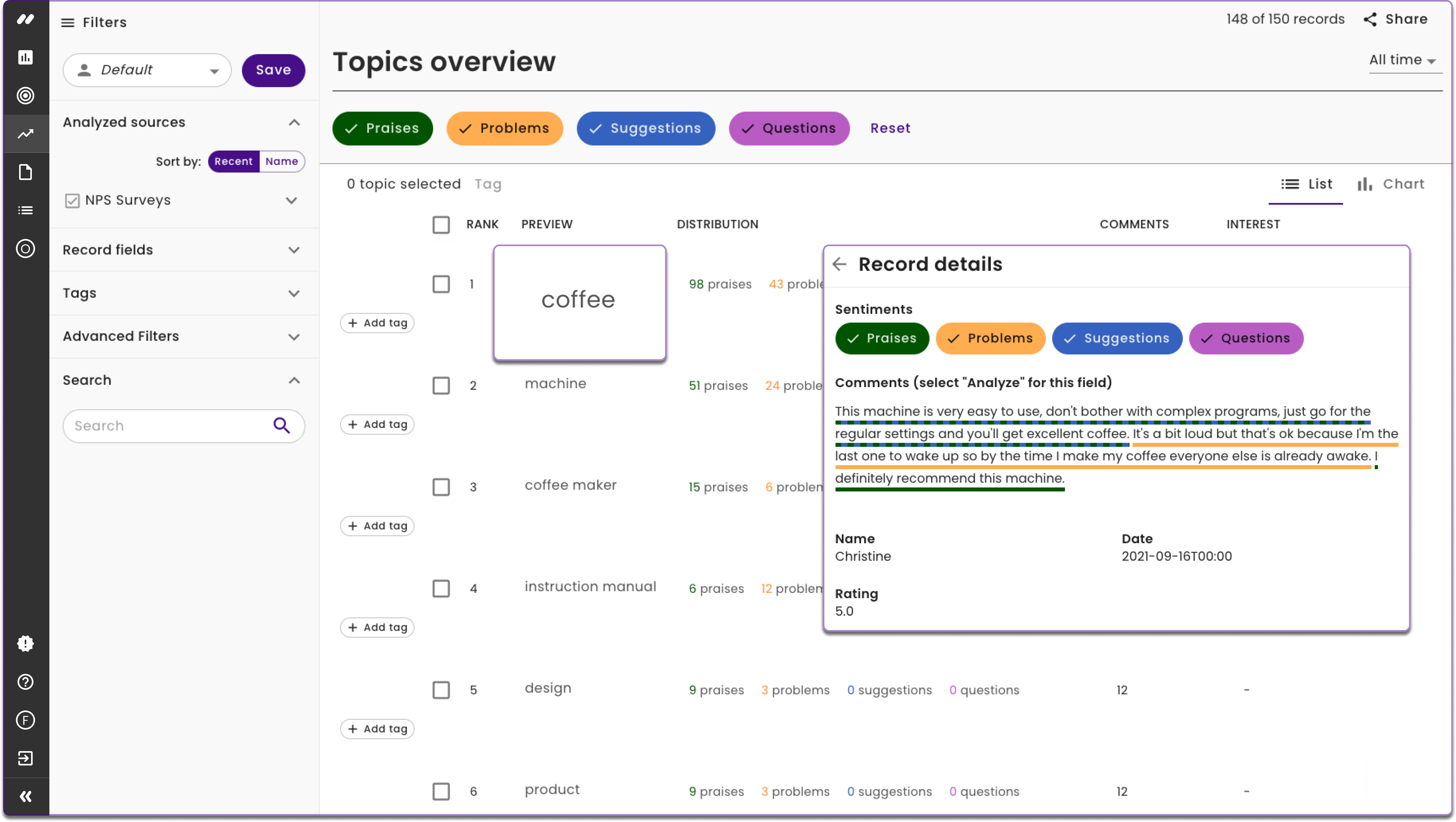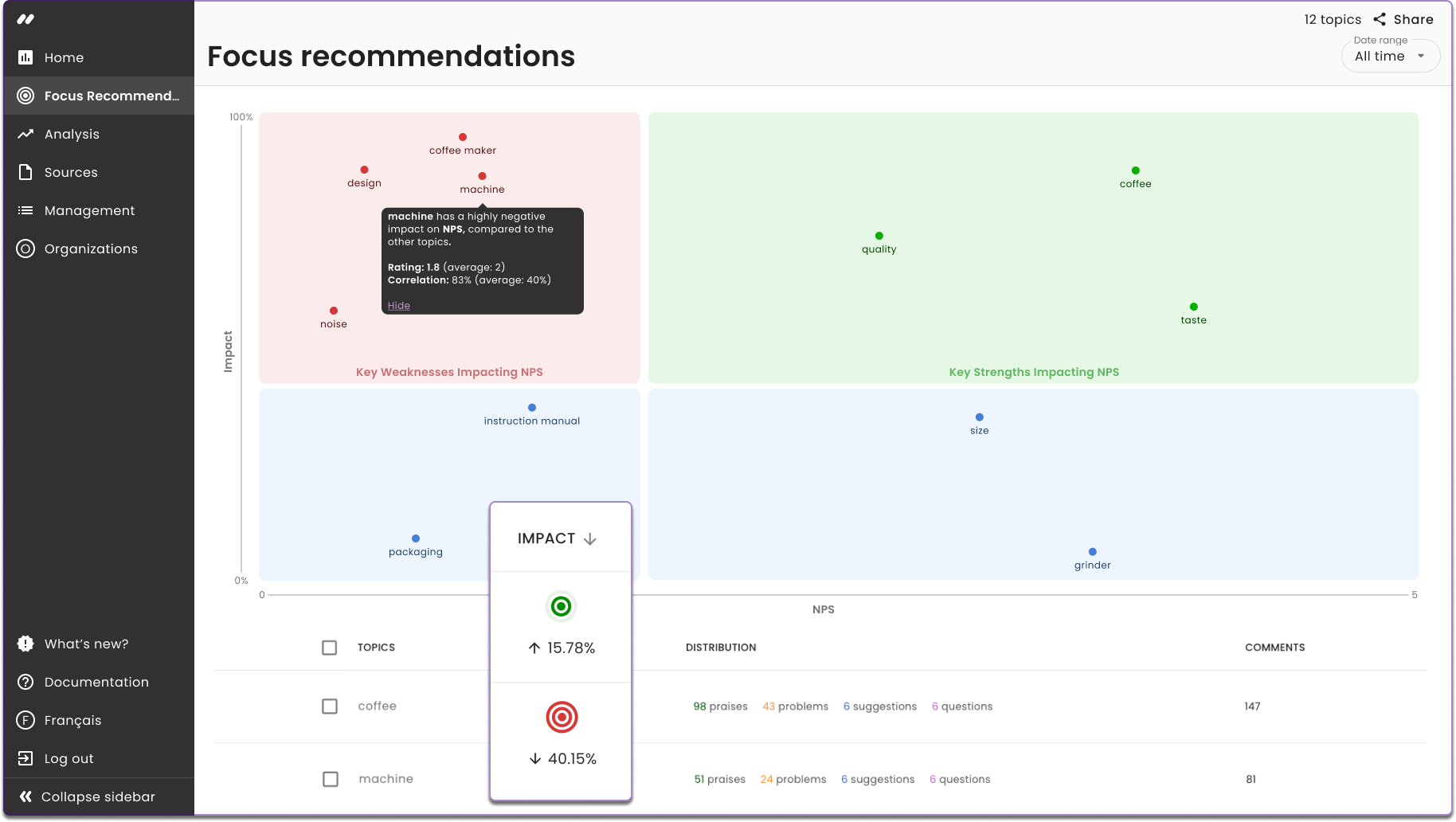It’s no secret that customers (and even you!) make purchase decisions based on emotion. Post-pandemic, understanding how customers feel at every touchpoint with your brand is critical to driving those buying decisions and retaining those customers. A customer’s value to a brand increases by 52% once they are “fully engaged” as set out in this landmark HBR study.
So, how do you monitor the experience of customers at every touchpoint? This is where customer journey mapping comes in. It’s a key piece of customer experience management by which businesses follow the path of a customer from beginning to end – even after making a purchase. Especially today, customers interact with your brand on a wild amount of digital channels from reviews and social media to surveys, support tickets, and call centers!
Once you’ve mapped your customer journey, you can isolate each stage and analyze the wealth of data that customers are providing through different channels. With the goal of understanding customers’ emotions, sentiment analysis takes this data at scale and brings critical business insights and recommendations to light that impact which actions you prioritize.
Jump right into our article to learn:
A customer’s value to a brand increases by 52% once they are fully engaged.
- Where emotion fits into the customer journey
- What is the role of reviews?
- What is the role of surveys?
- What is the role of support tickets?
- Mapping emotion in your customer journey with Keatext
1. Where emotion fits into the customer journey
As the name suggests, the customer journey is the path a customer takes from researching what they want to buy, to actually buying it, and going back to your brand time and again for more – provided they had an excellent customer experience.
Brands collect all sorts of insights throughout the customer journey like cart abandonment rates. But insights without emotion data are lacking so much context. And you can’t take meaningful action without that crucial context.
For example, let’s say your product gets an average 2-star rating in post purchase surveys. Do you know why? What did customers experience at the buying stage that brought up negative associations? You might be surprised to learn that the reason your product has 2 stars has nothing to do with the product itself – but something else entirely, like the shipping and delivery!
Let’s map out each stage of the customer journey and take a look at which channels customers are using to interact with your brand, and of course, what you can achieve by analyzing that information from customers:
Brands collect all sorts of insights throughout the customer journey. But insights without emotion data are lacking so much context. And you can’t take meaningful action without that crucial context.
- Research: You can analyze customer reviews online (think Amazon, Sephora…) and comments or mentions on social media (Facebook, Twitter, Instagram…) to monitor your brand reputation, find root causes of negative reviews, and monitor user-generated content in order to leverage that content in your messaging with customers.
- Consideration: In the consideration stage, customers are primarily engaging with your brand through chats on your website, asking questions about products and clarifying details about anything and everything that might affect their decision to buy. Analyzing these conversations at scale allows you to understand customers’ main questions and buying criteria.
- Buying: The most valuable data you collect from customers about their purchase usually happens after they made it – through channels like post purchase surveys where customers can rate their experience with your brand. Like all open-ended survey responses, text analytics plays a huge role in analyzing this freeform text data from customers to help you identify satisfaction drivers and uncover the context behind NPS or CSAT scores.
- Experience: Customers in the experience stage that interact with your brand through channels like your help desk or call center are… probably having an issue with something. And that’s okay! You can analyze the sentiment in these conversations to identify topics that bring up a lot of negative emotions. From here, you can improve time to resolution and reduce customer churn. Plus, you can assess agent performance in their conversations with customers and use this to find ways to empower your customer service team to deliver great experiences.
- Loyalty: Loyalty surveys provide crucial information about your brand in customers’ eyes. Are they on their way to becoming promoters and champions, or simply neutral? Here, you can identify what drives retention and loyalty, but also pinpoint what most directly impacts NPS and star ratings.
With this overview, let’s now dive into the role of different channels throughout the customer journey and how analyzing sentiment from them can provide actionable business intelligence.
2. What is the role of reviews?
The customer journey begins when a customer is looking for something. Before making a purchase decision, they’re going to look at lots of reviews from different sources to see how your product – and your brand – are received by other customers.
By understanding the context behind a positive or negative review, your business can more easily resolve issues and address customer needs more rapidly. Sentiment analysis provides insights that can drive decisions within your marketing, customer care, and product teams.
Analyzing the sentiment in reviews creates opportunities for your business to:
- Monitor brand reputation and health
- Identify products and experiences that delight customers
- Pinpoint common topics in negative reviews
- Create marketing that speaks to customers
3. What is the role of surveys?
Surveys collect feedback directly from your customers. They come in various types, each serving a purpose that can be enhanced through sentiment analysis.
- Loyalty surveys: Right after a purchase, many brands will ask customers whether or not they would recommend the brand to someone else.
- Post-call surveys: These ask customers about their experience talking with agents and if their questions were answered.
While pretty much all surveys collect quantitative data like NPS and CSAT scores, they often include open response questions where customers can write freeform comments.
NPS analysis of survey responses allows you to:
- Identify what causes customers to churn and what drives customer loyalty
- Uncover the context behind NPS or CSAT scores
- Know where to improve customer satisfaction
4. What is the role of support tickets?
Customers that have an issue with a product or service will go right to your help desk or contact center. Here, the customer experience is crucial – a bad experience with no solution will lead almost always to customer churn.
Sentiment analysis can bring together insights from your entire contact center, in terms of what issues or topics are occurring in large volumes or even recurring. Additionally, conversational data can be analyzed from the side of the customer or the side of the customer service agent to uncover how customers feel during a conversation with a representative.
With detailed insights into agent performance and the voice of the customer, you can empower your service representatives to provide fast, effective, and professional service.
By analyzing support tickets, you can:
- Improve time to resolution
- Reduce customer churn
- Assess agent performance
- Empower your customer service team
5. Mapping emotion in your customer journey with Keatext
Ready to map emotion in your customer journey? Get started with Keatext’s advanced sentiment analysis. You can set yourself apart with sentiment categories that go beyond basic polarity, identifying not only customers’ praises and problems but their questions and suggestions as well.

Analyze your reviews, surveys, support tickets, social media, chats, and call transcripts to understand customer sentiment at each stage of your customer journey. Then, prioritize what to address first with AI-based recommendations for action items that have the most impact on customer satisfaction metrics like NPS and CSAT.

Your most impactful customer journey improvements start with Keatext. Keep learning about what we do on our Learning Hub or check out our platform to see how you can start your sentiment analysis journey with us!


